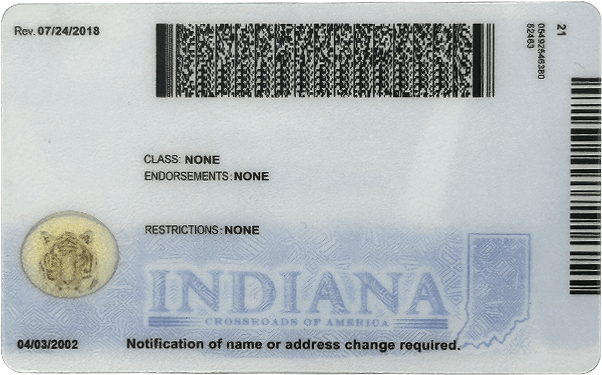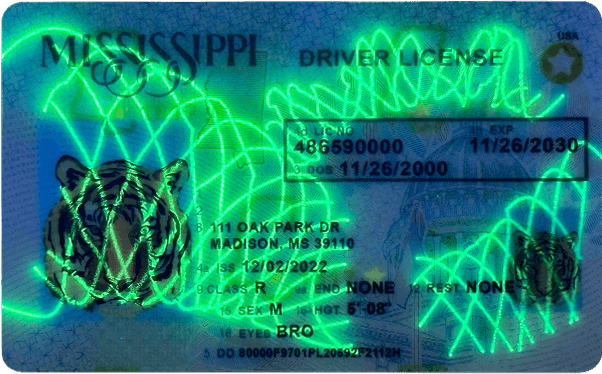When customers bring their vehicles to an auto – repair shop, one of the routine steps in the service process often involves checking the customer’s driver’s license. This is not just a formality but serves several important purposes for both the repair shop and the customer.
Reasons for Checking Driver’s Licenses
First and foremost, it helps in proper customer identification. Auto repair shops need to know exactly who they are dealing with. This is crucial for record – keeping, communication, and ensuring that the right person is authorizing the repairs and paying for the services. It also plays a role in liability issues. In case there are any disputes or problems related to the vehicle repair, having accurate customer identification through the driver’s license is essential.
Secondly, it can be related to legal and security requirements. In some regions, there may be regulations or best – practices that require businesses like auto repair shops to verify the identity of their customers. This helps in preventing fraud, such as when someone tries to have a vehicle repaired using false pretenses or when there are issues related to stolen vehicles.

The Process of Checking Driver’s Licenses
When a customer arrives at the auto repair shop, the service advisor or receptionist will typically ask for the driver’s license. They will start by visually inspecting the license. This includes looking at the physical appearance of the license to ensure it is a valid document. They check for security features such as holograms, watermarks, and specific printing techniques that are unique to official driver’s licenses. For example, many modern driver’s licenses have holographic images that change when viewed from different angles.
The next step is to verify the information on the license. The service staff will check the name, address, date of birth, and photo on the license against the person standing in front of them. They will make sure that the name matches the name provided by the customer during the intake process. The address can be useful for sending follow – up communications or in case the vehicle needs to be returned to a different location. The date of birth is important to ensure that the customer is of legal age to authorize repairs and drive the vehicle.

In some cases, auto repair shops may also use electronic means to further verify the driver’s license. There are systems available that can be used to cross – reference the license number and other details with official databases. This can provide additional confirmation of the license’s validity and the customer’s identity. However, these systems are usually subject to privacy laws and proper authorization procedures.
Handling and Protecting Driver’s License Information
Once the driver’s license has been checked, auto repair shops have a responsibility to handle the information carefully. They are required to keep the information secure to protect the customer’s privacy. This means storing any copies or digital records of the license in a secure location, whether it’s a locked filing cabinet for paper copies or a password – protected computer system for digital ones.
Repair shops should also limit access to the driver’s license information to only those employees who need it for the service process. For example, only the service advisors, managers, and potentially accounting staff who are involved in billing may need access to the information. They must also comply with data protection laws, which may restrict how long they can keep the information and who they can share it with.

Common Problems and Solutions
Problem 1: Expired Driver’s License
Sometimes, a customer may present an expired driver’s license. This can be a concern for the auto repair shop as it may question the customer’s legal right to drive and authorize repairs.
Solution: The repair shop should inform the customer that an expired license may pose an issue. They can ask the customer to obtain a valid replacement as soon as possible. In the meantime, if the customer has a valid reason for the delay (such as waiting for a new license to be mailed), the shop may consider taking additional steps like obtaining a copy of the renewal application or a temporary driving permit as proof of the customer’s ongoing legal status as a driver.
Problem 2: Damaged Driver’s License
A damaged license can be difficult to verify. Security features may be obscured, and the information on the license may be unclear.
Solution: The repair shop should ask the customer if they have another form of identification. This could include a passport, state – issued ID card, or military ID. If the customer does not have another form of ID, the shop may suggest that the customer contact the local Department of Motor Vehicles (DMV) to obtain a replacement license. In some cases, if the damage is minor and the key information is still legible, the shop may be able to use electronic verification systems to confirm the license’s validity.
Problem 3: Inconsistent Information
There may be situations where the information on the driver’s license does not match the information provided by the customer or other records. For example, the address on the license may be different from the address the customer provided during the intake process.
Solution: The repair shop should politely ask the customer to clarify the situation. The customer may have recently moved and not updated their license yet. In such cases, the shop can note the new address for future communication while still using the address on the license for official records. If there are more significant discrepancies, such as a different name or date of birth, the shop may need to ask for additional documentation to confirm the customer’s identity, such as a birth certificate or social security card.
Problem 4: Suspended or Revoked License
If it is discovered that the customer’s license is suspended or revoked, it raises concerns about the legality of the customer driving the vehicle to the repair shop and authorizing repairs.
Solution: The repair shop should inform the customer of the situation and may refuse to release the vehicle to the customer until the license status is resolved. They can also offer to hold the vehicle securely until the customer provides proof of a valid license or proper authorization to transfer the vehicle to another party who is legally allowed to drive it. In some cases, the shop may need to follow local laws and regulations regarding reporting such situations to the appropriate authorities.
Problem 5: Lost Driver’s License
A customer may arrive at the repair shop without their driver’s license because they have lost it.
Solution: The repair shop should ask the customer to provide other forms of identification, such as a passport, utility bill with their name and address, or a credit card with a matching signature. If the customer cannot provide sufficient alternative identification, the shop may suggest that the customer obtain a temporary ID from the DMV or provide some other form of proof of identity and vehicle ownership, such as a vehicle registration document in their name.
Fake ID Pricing
unit price: $109
| Order Quantity | Price Per Card |
|---|---|
| 2-3 | $89 |
| 4-9 | $69 |
| 10+ | $66 |


